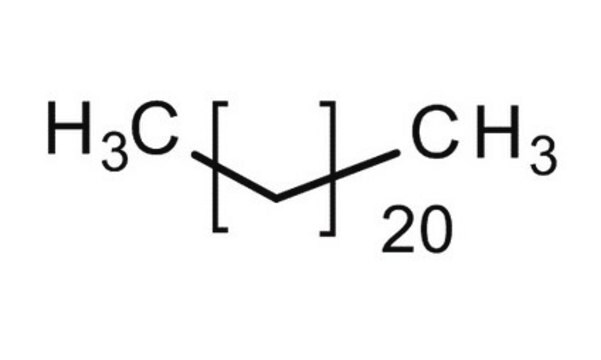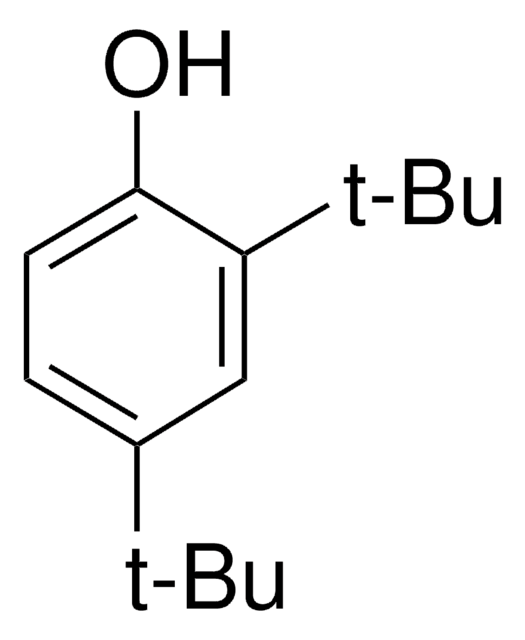134457
Docosan
99%
Synonym(e):
n-Docosane
About This Item
Empfohlene Produkte
Dampfdichte
10.8 (vs air)
Qualitätsniveau
Dampfdruck
<1 mmHg ( 21.1 °C)
Assay
99%
Form
solid
bp
369 °C (lit.)
mp (Schmelzpunkt)
42-45 °C (lit.)
Dichte
0.778 g/mL at 25 °C (lit.)
SMILES String
CCCCCCCCCCCCCCCCCCCCCC
InChI
1S/C22H46/c1-3-5-7-9-11-13-15-17-19-21-22-20-18-16-14-12-10-8-6-4-2/h3-22H2,1-2H3
InChIKey
HOWGUJZVBDQJKV-UHFFFAOYSA-N
Suchen Sie nach ähnlichen Produkten? Aufrufen Leitfaden zum Produktvergleich
Verwandte Kategorien
Anwendung
Lagerklassenschlüssel
11 - Combustible Solids
WGK
WGK 3
Flammpunkt (°F)
235.4 °F - closed cup
Flammpunkt (°C)
113 °C - closed cup
Persönliche Schutzausrüstung
dust mask type N95 (US), Eyeshields, Gloves
Hier finden Sie alle aktuellen Versionen:
Besitzen Sie dieses Produkt bereits?
In der Dokumentenbibliothek finden Sie die Dokumentation zu den Produkten, die Sie kürzlich erworben haben.
Kunden haben sich ebenfalls angesehen
Protokolle
Separation of Decane; Dodecane; Tetradecane; Hexadecane; Octadecane; Eicosane; Docosane; Tetracosane; Hexacosane; Octacosane
Unser Team von Wissenschaftlern verfügt über Erfahrung in allen Forschungsbereichen einschließlich Life Science, Materialwissenschaften, chemischer Synthese, Chromatographie, Analytik und vielen mehr..
Setzen Sie sich mit dem technischen Dienst in Verbindung.












